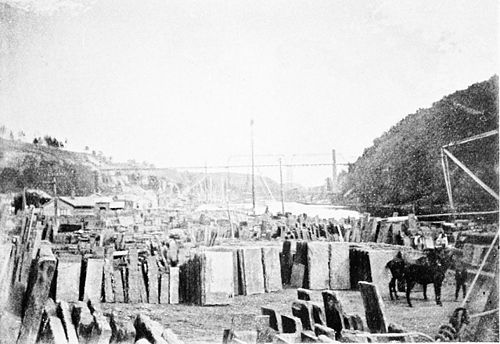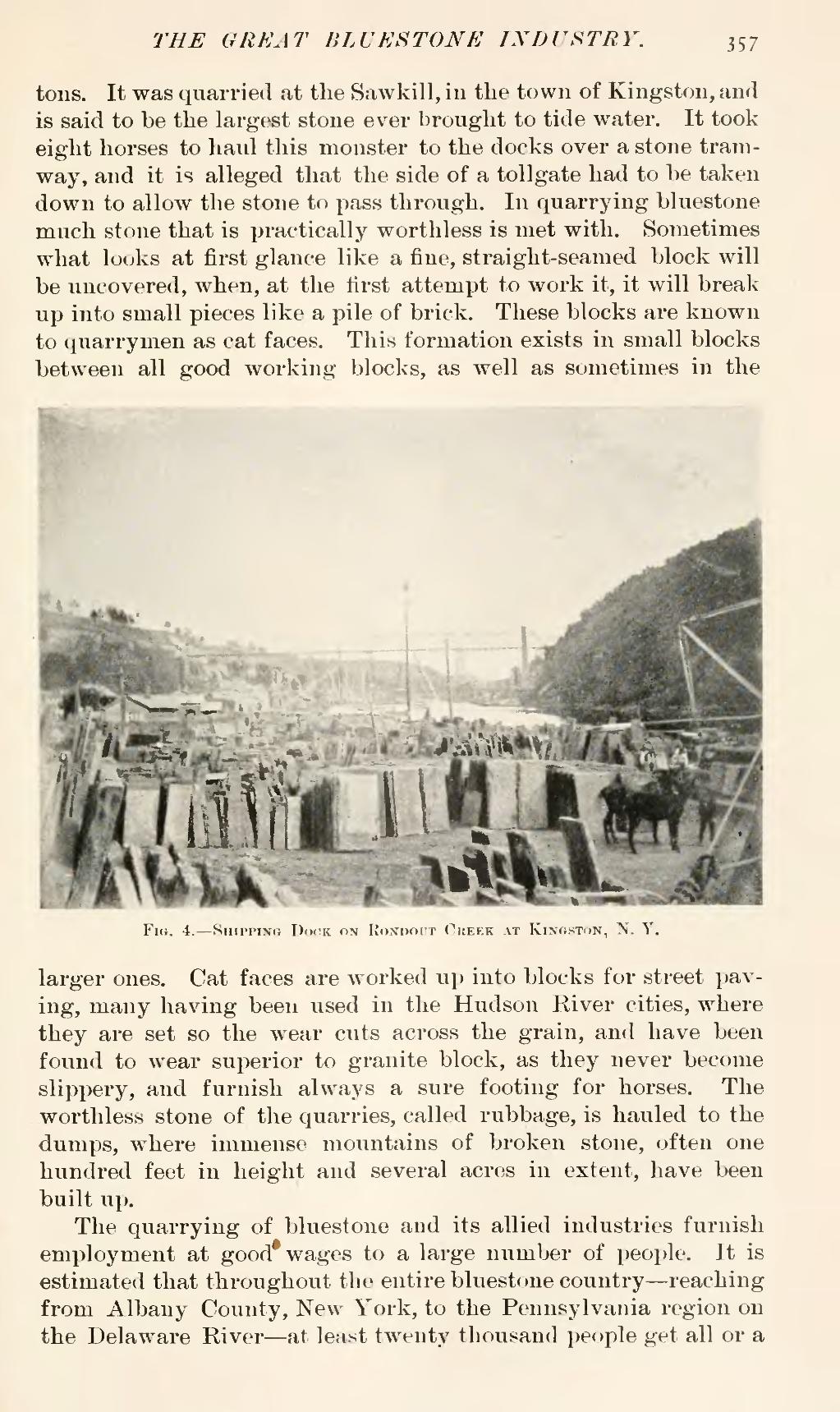tons. It was quarried at the Sawkill, in the town of Kingston, and is said to be the largest stone ever brought to tide water. It took eight horses to haul this monster to the docks over a stone tramway, and it is alleged that the side of a tollgate had to be taken down to allow the stone to pass through. In quarrying bluestone much stone that is practically worthless is met with. Sometimes what looks at first glance like a fine, straight-seamed block will be uncovered, when, at the first attempt to work it, it will break up into small pieces like a pile of brick. These blocks are known to quarrymen as cat faces. This formation exists in small blocks between all good working blocks, as well as sometimes in the

Fig. 4.—Shipping Dock on Rondout Creek at Kingston, N. Y.
larger ones. Cat faces are worked up into blocks for street paving, many having been used in the Hudson River cities, where they are set so the wear cuts across the grain, and have been found to wear superior to granite block, as they never become slippery, and furnish always a sure footing for horses. The worthless stone of the quarries, called rubbage, is hauled to the dumps, where immense mountains of broken stone, often one hundred feet in height and several acres in extent, have been built up.
The quarrying of bluestone and its allied industries furnish employment at good* wages to a large number of people. It is estimated that throughout the entire bluestone country—reaching from Albany County, New York, to the Pennsylvania region on the Delaware River—at least twenty thousand people get all or a

